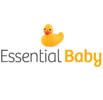In recent years, cycle syncing has emerged as a popular approach for optimizing health and well-being, particularly among individuals with menstrual cycles.
This holistic method involves aligning various aspects of life such as diet, exercise, and productivity with the different phases of the menstrual cycle.
In this blog post, we’ll delve into what cycle syncing is, its benefits, provide examples, and explore the research supporting its effectiveness.
What is Cycle Syncing?
Cycle syncing, also known as menstrual cycle syncing or period syncing, is the practice of adapting lifestyle choices to the natural fluctuations of hormones throughout the menstrual cycle.
The menstrual cycle consists of four main phases: menstruation, follicular, ovulation, and luteal.
Each phase is characterized by distinct hormonal changes that can affect energy levels, mood, and physical capabilities.
Benefits of Cycle Syncing:
1. Enhanced Energy Levels: By aligning activities with hormonal fluctuations, individuals can optimize their energy levels throughout the month. For example, during the follicular phase, which occurs after menstruation, estrogen levels rise, leading to increased energy and motivation. This phase may be ideal for engaging in high-intensity workouts or tackling demanding tasks.
2. Improved Exercise Performance: Tailoring exercise routines to match the different phases of the menstrual cycle can result in improved performance and recovery. Research suggests that women may experience greater strength and endurance during certain phases, such as the follicular phase, when estrogen levels are higher.
3. Hormonal Balance: Cycle syncing promotes hormonal balance by supporting the body’s natural rhythms. By syncing activities like exercise and nutrition with hormonal fluctuations, individuals may experience fewer symptoms of hormone-related issues such as PMS (premenstrual syndrome) and irregular cycles.
4. Better Mental Well-being: The hormonal changes that occur throughout the menstrual cycle can impact mood and cognitive function. By adapting lifestyle choices to support hormonal balance, individuals may experience improved mental well-being, including reduced stress and anxiety.
Examples of Cycle Syncing:
1. Exercise: During the follicular phase, focus on high-intensity workouts such as HIIT (high-intensity interval training) or strength training to take advantage of increased energy levels and endurance. In contrast, during the luteal phase, consider incorporating activities like yoga or gentle cardio to support relaxation and reduce stress.
2. Nutrition: Adjusting dietary choices based on hormonal fluctuations can support overall health and well-being. For example, during the luteal phase, when cravings may increase due to rising progesterone levels, prioritize nutrient-dense foods and incorporate sources of healthy fats to support satiety.
3. Productivity: Syncing productivity goals with the menstrual cycle can help individuals optimize their workflow and efficiency. For instance, during the ovulation phase, when cognitive function tends to be at its peak, tackle challenging tasks or creative projects that require focus and concentration.
Research on Cycle Syncing:
While more research is needed to fully understand the effects of cycle syncing, preliminary studies suggest its potential benefits for women’s health and well-being.
A 2019 review published in the Journal of Clinical Medicine concluded that aligning lifestyle behaviours with the menstrual cycle may have positive effects on various aspects of health, including exercise performance, mood, and hormonal balance.
Additionally, a study published in the British Journal of Sports Medicine found that women who followed a cycle-synced exercise program experienced improvements in fitness and performance compared to those who followed a non-synced program.
Cycle syncing offers a holistic approach to health and well-being that recognizes the unique needs and rhythms of the menstrual cycle.
By aligning lifestyle choices with hormonal fluctuations, individuals can optimize energy levels, exercise performance, and overall well-being throughout the month.
While more research is needed to fully understand its effects, cycle syncing shows promise as a personalized approach to women’s health and fitness.
Cameron Corish has been caring and achieving results for the local Wishart, Mansfield and Mt Gravatt community for over 10 years. Together with the Core Health Coaching Team, he takes a multi-disciplined and holistic approach to health and fitness addressing the physical, mental and emotional aspects of one’s health.
Ready to feel and look your best? Book a time for a FREE chat and see how we can make a difference in your life. Book here calendly.com/corehealthcoaching or email Cameron at cameron@corehealthcoaching.com.au
References
“The Menstrual Cycle: A Biological Marker of General Health in Adolescents” by Leesa K. Denny, PhD, RN, FAAN, and Joan L. Bottorff, RN, PhD.
“Menstrual Cycle-Linked Symptoms: Evidence from the German Women’s Health Care Study” by Hannelore Kumle, Elke Wintermantel, Hans-Peter Bischof, and Jürgen Kleinstein.
“Hormonal Influences on Mood and Behaviour in Women” by Peter J. Schmidt, MD, and David R. Rubinow, MD.
“Effect of Menstrual Cycle Phase on the Brain: A Resting-State fMRI Study” by Erika J. Wolf, PhD, Jessica A. Greenberg, PhD, and Tiffany M. Love, MA.
“Association of Hormonal Contraception with Depression in the Postpartum Period” by Øjvind Lidegaard, DMSc, Lina Steinrud Mørch, PhD, and Lars Vedel Kessing, MD, DMSc.















Speak Your Mind